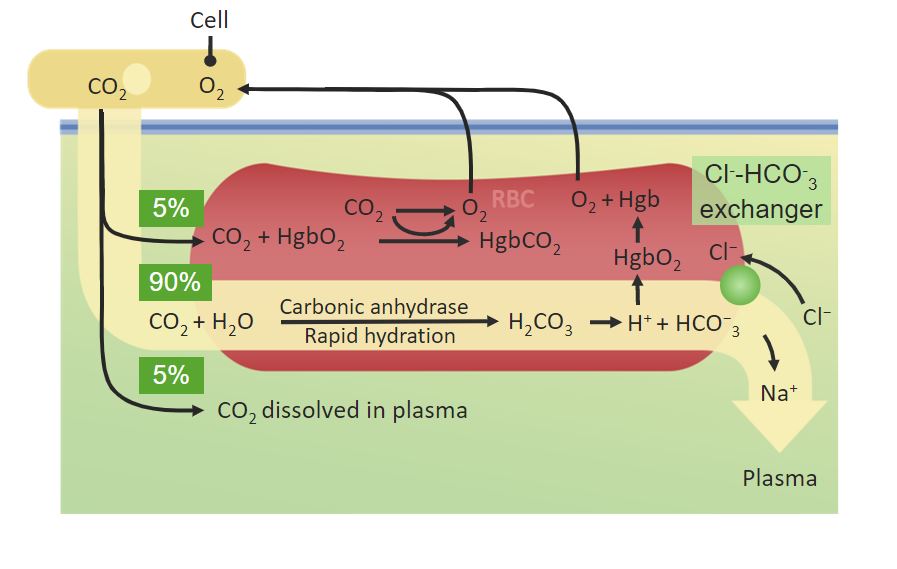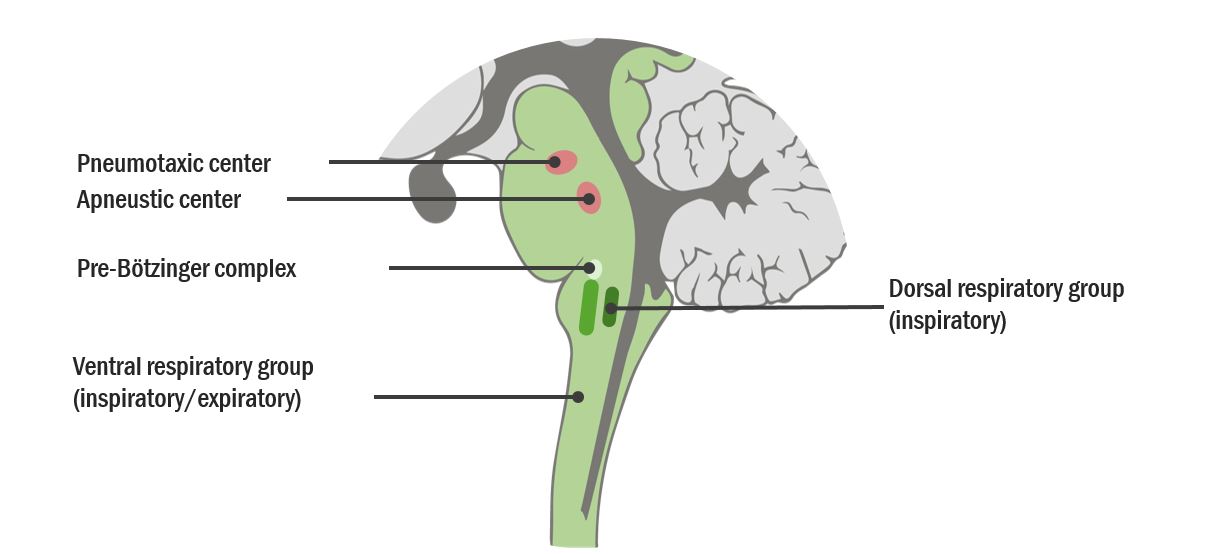Playlist
Show Playlist
Hide Playlist
Introduction – Control & Regulation of Breathing
-
Slides 05 PulmonaryControlRegulation RespiratorySystem.pdf
-
Download Lecture Overview
00:00 This lecture is about the control of regulation of breathing. 00:04 We have a number of important learning goals to go through. 00:07 The first is to identify afferent inputs to the pulmonary system and the respiratory control centers of the brain stem. 00:14 In this lecture, we will also discuss how the mechanisms by which peripheral and central chemoreceptors sense changes in the various blood gases. 00:24 And finally, we’ll be able to predict the ventilatory response to a given change in our arterial blood gas. 00:32 Okay, let’s get started. 00:34 What are the different parameters that we can control to be able to alter ventilation? We really only have two different things to modulate. 00:43 The first is gonna be breathing frequency or how fast one breathes. 00:47 The second will be the depth of breath such as the tidal volume. 00:53 We have a number of different inputs that will go to the respiratory system. 00:59 There are three main classifications; we’ll start off with chemoreceptors. 01:03 They are both central chemoreceptors and peripheral chemoreceptors. 01:09 There are receptors in the lungs and these will be responsive to things like lung stretch - and this is very important because if the lungs are overstretched, they are very fragile environments around the capillaries and the alveoli and they could stretch too much. 01:29 There are also irritant receptors in the pulmonary system. 01:33 There are specialize sensory fibers known as bronchial C-fibers as well as Juxta-capillary receptors.
About the Lecture
The lecture Introduction – Control & Regulation of Breathing by Thad Wilson, PhD is from the course Respiratory Physiology.
Included Quiz Questions
Which type of respiratory neural inputs are found outside of the lungs?
- Central chemoreceptors
- Juxta-capillary receptors
- Bronchial C-fibers
- Lung stretch receptors
- Irritant receptors
Customer reviews
5,0 of 5 stars
| 5 Stars |
|
1 |
| 4 Stars |
|
0 |
| 3 Stars |
|
0 |
| 2 Stars |
|
0 |
| 1 Star |
|
0 |
very clear explanation. great content. great lecturer. good pace of speech, making it easy to listen. nice clear visuals





